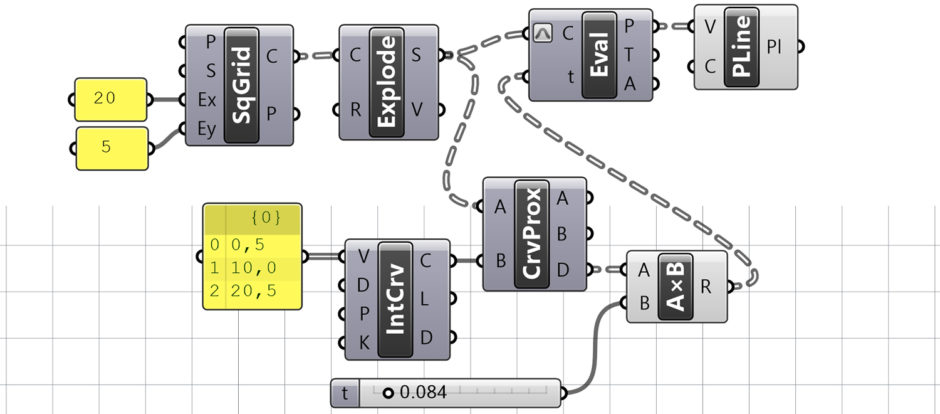Basic Grid Deformation
I am still trying to find the simplest solution to some geometric definitions. This is why I called this Grasshopper definition “Basic Grid Deformation”. Here you see the Curve Proximity (CrvProx) component in use. This component calculated the shortest distance between two curves. I think the underpinnings of this component are very interesting. I hope I can code it in Python one day. In order to see the result more clearly, the Previews of the Interpolate Curve (IntCrv) and Square (SqGrid) components that we use are closed.
As you can see, this definition shows the basic curve drawing to novice users. If you connect the distance (D) values from Curve Proximity (CrvProx) directly to the t input, the result will look complicated because the values are too high. Therefore, before sending the distance values to the Evaluate Curve (Eval), we multiply them by a number under our control and reduce them proportionally to absorb some.

We could have done this reduction in other ways. For example, with the Remap Numbers (ReMap) component, we can scale a list of numbers from a given range to fit another range. We recommend that you try the same application in the same way. Let’s see if you can discover what other components you will need for the Remap Numbers (Remap) operation. Below is the diagram of the Basic Grid Deformation.
This definition is another basic exercise for beginners of Grasshopper. I hope it is beneficial for them. Here is the Grasshopper file, if you want to check it out:









